Carl E. Olson's Blog, page 155
April 25, 2013
The Catholic Church in Africa: Vibrant, Young, and Resilient

The Catholic Church in Africa: Vibrant, Young, and Resilient | William L. Patenaude | CWR
An interview with Allen Ottaro, national coordinator for MAGiS Kenya
Allen Ottaro, 28, lives in Nairobi, Kenya. A parishioner at St. Paul’s Catholic University Chapel in the Archdiocese of Nairobi, he studied Environmental Planning and Management at Kenyatta University. Mr. Ottaro is the national coordinator of MAGiS Kenya, an Ignatian young adult ministry, and has worked with the African Jesuit AIDS Network. He is also a cofounder of the Catholic Youth Network for Environmental Sustainability in Africa. Mr. Ottaro has attended the past three World Youth Days and looks forward to July’s event in Brazil. He recently spoke with William L. Patenaude for CWR about the Catholic Church in Africa, especially the role of faith in the lives of the continent’s young people.
CWR: After Pope Benedict XVI’s resignation and during the conclave, many in the mainstream media and within the Church hoped for an African pope. How did the election of Pope Francis of Argentina speak to the Church in Africa?
Ottaro: Many people in Africa share similar realities as those in Argentina. The Church in Africa was praying together with the Universal Church for the cardinals as they listened to the guidance of the Holy Spirit. And together with the Universal Church, Africans are rejoicing and giving thanks to the Lord for Pope Francis. The images of (then) Cardinal Jorge Bergoglio washing and kissing the feet of those living with HIV and AIDS in his Archdiocese of Buenos Aires and his commitment to the poor, to peace, and to the protection of creation is already making a very strong impression about our own responsibilities as people of faith.
CWR: In general, tell us about the Church in Africa—its strengths and challenges—including how its role varies throughout the continent.
April 24, 2013
Save 20% off New and Select Titles

Save 20% off New and Select Titles | Offer ends April 30th, 2013 at 12:00 midnight EST
These prices are available online only through Ignatius.com
As
we prepare to celebrate the feasts of two giants of the Church, St.
Mark the Evangelist and St. Catherine of Siena, let us be inspired to
examine what they can teach us about the richness of the Catholic faith.
Read St. Mark’s divinely inspired words with the added insight of
Biblical scholars and theologians Scott Hahn and Curtis Mitch with the Ignatius Catholic Study Bible Edition of The Gospel According to Mark . Discover what makes St. Marks Gospel distinct from the other three as you read Cardinal Schoenborn’s Behold, God’s Son! Travel back in time with Nobel Prize winning author Sigrid Undset as she brings St. Catherine of Siena to life in her historical novel Catherine of Siena . Introduce your younger children to the life of St. Catherine by watching St. Catherine of Siena: My Catholic Family together. Finally, don’t forget your older children, share with the beauty of St. Catherine’s life with them as you read Louis de Wohl’s Lay Siege to Heaven together.
Hot Off the Press:
Last but not least, take advantage of this week's offer of 20% off new releases, including: Bakhita: From Slave to Saint , the newest booklet of the Ignatius Study Bible series, Proverbs, Ecclesiastes, Song of Solomon and two new Pope Francis titles, On Heaven and Earth: Pope Francis on Faith, Family, and the Church in the Twenty-First Century and Pope Francis: His Life in His Own Words.
St. Mark and St. Catherine of Siena
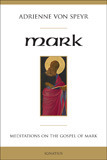 Mark Meditations on the Gospel of Mark
Mark Meditations on the Gospel of Mark
Adrienne von Speyr
These meditations on the Gospel of Mark, with the exception of the second part on the Passion, were given by Adrienne von Speyr
between 1945 and 1958 to members of the Community of St. John, which
she founded with the renowned theologian, Fr. Hans Urs von Balthasar.
Adrienne is speaking to young adults who have decided to live the state
of the evangelical counsels in a secular profession, as part of a
recently established secular institute. Nevertheless this contemplative
commentary can be very useful for all who seek to meditate on Holy
Scripture. The points for meditation are not primarily for spiritual
reading, but an introduction to personal prayer. They are meant only to
point out a path, because it is the Holy Spirit who directs
contemplative prayer in all liberty. As one reads through this book, he
will find in it a kind of synthesis of Adrienne von Speyr's
spirituality.
Also available as an e-book
Regular price: $31.95, sale price: $25.56
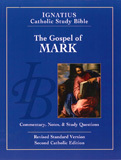 The Gospel According to Mark (2nd Ed.): Ignatius Catholic Study Bible
The Gospel According to Mark (2nd Ed.): Ignatius Catholic Study Bible
Scott Hahn
Large format, featuring large text size and additional
margin space for personal annotations! The larger format enhances both
individual and group study.
Based on the Revised Standard Version - Catholic Edition,
this volume leads readers through a penetrating study of the Gospel of
Mark, using the biblical text itself and the Church's own guidelines for
understanding the Bible. Ample notes accompany each page, providing
fresh insights and commentary by renowned Bible teachers Scott Hahn and Curtis Mitch, as well as time-tested interpretations from the Fathers of the Church.
These helpful study notes make explicit what St. Mark often assumes. Or
they provide rich historical, cultural, geographical or theological
information pertinent to the Gospel - information that bridges the
distance between the biblical world and our own.
Regular price: $11.95, sale price: $9.56
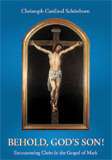 Behold, God's Son!: Thoughts on the Gospel in the Year of St. Mark
Behold, God's Son!: Thoughts on the Gospel in the Year of St. Mark
Christoph Cardinal Schoenborn
Cardinal Schonborn, former student of Pope Benedict XVI and
well-known as a brilliant theologian, presents his second volume of
reflections on the person of Christ, this time as found in the Gospel of Mark. Sunday after Sunday, Cardinal Schonborn
uses the Gospel readings from Mark to explain the beauty of the Gospel
in clear and understandable words. He says that no other Gospel writer
talks in such a human way about Jesus as Mark. Anger and sorrow, Jesus’
passionate emotional responses, are more explicitly mentioned in Mark
than in the other Gospels. But however human Jesus may appear here, it
is also Mark in particular who also strongly emphasizes his divinity.
Believing in Jesus, having faith in him, is what Mark is all about.
Regular price: $16.95, sale price: $13.56
 Praying with Saint Mark's Gospel Daily Reflections on the Gospel of St. Mark
Praying with Saint Mark's Gospel Daily Reflections on the Gospel of St. Mark
Fr. Peter Cameron, O.P.
Delve deeply into Mark's Gospel, which is read during the liturgical year 2011-2012. Edited by Magnificat's Fr. Peter Cameron, O.P.,
this book is a clear-cut and effective way to meditate daily on Saint
Mark's Gospel. Read the entire Gospel within one year! An entry for each
day of the calendar year includes:
a short quotation from Saint Mark's Gospel
an original, down-to-earth reflection composed by one of the book's twenty-three gifted spiritual authors, including Anthony Esolen, Fr. Vincent Nagle, Fr. George Rutler, and Fr. Joseph Lienhard, S.J.
a thought-provoking final prayer
Regular price: $12.95, sale price: $10.36
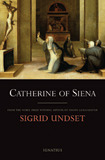 Catherine of Siena
Catherine of Siena
Sigrid Undset
Sigrid Undset’s Catherine of Siena is critically
acclaimed as one of the best biographies of this well known, and amazing
fourteenth-century saint. Known for her historical fiction, which won
her the Nobel Prize for literature in 1928, Undset based this factual
work on primary sources, her own experiences living in Italy, and her
profound understanding of the human heart. Catherine of Siena was a
particular favorite of Undset, who also was a Third Order Dominican. An
extraordinarily active, intelligent, and courageous woman, Catherine at
an early age devoted herself to the love of God. The intensity of her
prayer, sacrifice, and service to the poor won her a reputation for
holiness and wisdom, and she was called upon to make peace between
warring nobles. Believing that peace in Italy could be achieved only if
the Pope, then living in France, returned to Rome, Catherine boldly
traveled to Avignon to meet with Pope Gregory XI. Also available as an e-book and audio download or an audio book on CD .
Regular price: $17.95, sale price: $14.36
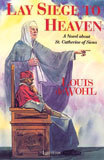 Lay Siege to Heaven: A Novel of St. Catherine of Siena
Lay Siege to Heaven: A Novel of St. Catherine of Siena
Louis de Wohl
Continuing his popular series of novels about saints of the
Church, de Wohl devotes his considerable talents to an interpretation of
one of the most unusual women of all time, Saint Catherine of Siena.
Her career was extraordinary. In that confused and dangerous era of
history, the Pope was living at Avignon: Catherine persuaded him to
return to Rome. The City-States of Italy were at war with each other:
Catherine subdued them. There was pestilence: Catherine served and
saved. She performed miracles, she received the stigmata, she drew about
her a crowd of devoted men and women. A saint who would not let the
Lord God alone, she really did lay siege to heaven—and changed the face
of her world. This novel, which is also a vivid biography, brings
Catherine of Siena to life in a remarkable way. She lives on every page.
Also available as an e-book
Regular price: $17.95, sale price: $14.36
New Titles
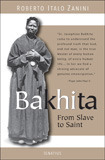 Bakhita: From Slave to Saint
Bakhita: From Slave to Saint
Roberto Italo Zanini
When she was about nine years old, Josephine Bakhita
was kidnapped near Darfur, Sudan, by Arab slave traders. For several
years she was subjected to brutal and humiliating treatment until she
was ransomed and taken to Venice, Italy, where she became a Catholic and
a nun. Joyfully and serenely Bakhita served in a convent, school and
infirmary run by Canossian sisters in a small, obscure town in northern
Italy until her death in 1947. Based on Bakhita's autobiography, which
she dictated to a Canossian sister in obedience to her superior, the
canonization files and many other sources, Roberto Zanini records the
life, virtues and miracles of this daughter of Africa who has become a
sister to the whole world.
Regular price: $16.95, sale price: $13.56
Related Items:
Bakhita: From Slave to Saint (DVD)
Two Suitcases The Story of St. Josephine Bakhita (DVD)
Saint Josephine Bakhita My Catholic Family
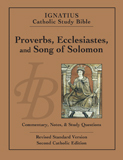 Proverbs, Ecclesiastes, Song of Solomon: Ignatius Catholic Study Bible
Proverbs, Ecclesiastes, Song of Solomon: Ignatius Catholic Study Bible
Scott Hahn, Curtis Mitch
Large format, featuring large text size and additional
margin space for personal annotations! The larger format enhances both
individual and group study.
Based on the Revised Standard Version - Second Catholic Edition, this 15th volume in the popular Bible study series
leads readers through a penetrating study of the Books of Proverbs,
Ecclesiastes and Song of Solomon using the biblical text itself and the
Church's own guidelines for understanding the Bible. Ample notes
accompany each page, providing fresh insights and commentary by renowned
Bible teachers Scott Hahn and Curtis Mitch, as well as time-tested interpretations from the Fathers of the Church.
They provide rich historical, cultural, geographical or theological
information pertinent to the Old Testament book - information that
bridges the distance between the biblical world and our own.
Regular price: $11.95, sale price: $9.56
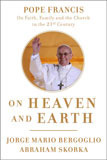 On Heaven and Earth: Pope Francis on Faith, Family, and the Church in the Twenty-First Century
On Heaven and Earth: Pope Francis on Faith, Family, and the Church in the Twenty-First Century
Jorge Mario Bergoglio & Abraham Skorka
From the man who became Pope Francis--Jorge Mario Bergoglio
shares his thoughts on religion, reason, and the challenges the world
faces in the 21st century with Abraham Skorka, a rabbi and biophysicist.
On Heaven and Earth, originally published in Argentina in
2010, brings together a series of these conversations where both men
talked about various theological and worldly issues, including God,
fundamentalism, atheism, abortion, homosexuality, euthanasia,
same-sex marriage, and globalization. From these personal and
accessible talks comes a first-hand view of the man who would become
pope to 1.2 billion Catholics around the world in March 2013.
Regular price: $22.00, sale price: $17.60
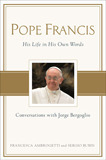 Pope Francis: His Life in His Own Words
Pope Francis: His Life in His Own Words
Francesca Ambrogetti and Sergio Rubin
On March 13, 2013, the former Cardinal Jorge Mario Bergoglio,
longtime Archbishop of Buenos Aires, now Pope Francis, was elected to
succeed Pope Benedict. He is the first Latin American pope, the first
Jesuit pope, and the first to take the name Francis, after St. Francis
Assisi, the 13th century monk known for his charity and kindness. A
learned and introspective man, he does not avoid the uncomfortable
subjects: the declining numbers of priests and nuns; celibacy;
the sexual abuse scandals that have rocked the Church; and his opinions
about and experience with the military dictatorship of his own
crisis-riddled country. Through his own words, we come to know a man
whose actions and words reflect his deeply-rooted humility. The book
concludes with the Pope's own writings and reflections, full of wisdom
and inspiration.
Regular price: $24.95, sale price: $19.96
Films
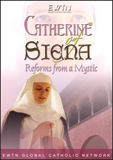 Catherine of Siena
Catherine of Siena
Take a breathtaking journey to Catherine of Siena's native Italy,
as actress Mary McCown brings this medieval saint to life. While
visiting the houses, palaces and churches where St. Catherine served God
and the Church, Fr. Jacques Daley reveals the spiritual lessons of this
holy woman who spent her life addressing the political powers of the
time and caring for those stricken with the plague. This documentary DVD
set is a teaching series shot both on-location and in studio with
various letters and scenes from St. Catherine’s life dramatically
re-created by actress Mary McCowan.
Regular price: $39.95, sale price: $31.96
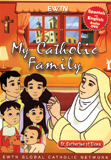 St. Catherine of Siena: My Catholic Family
St. Catherine of Siena: My Catholic Family
The life of St. Catherine of Siena and the value of suffering are explored.
In the wonderful new animated series, My Catholic Family, Thomas
and his wife Helen help their children Alex and Sarah come to a greater
understanding of the importance of virtue by teaching them about the
lives of the Saints. Each Saint, whose story is told in the film, has a
particular important lesson from their lives to teach the children as
revealed in these entertaining and educational films that children will
love.
Regular price: $14.95, sale price: $11.96
Catholic World Report
Christianity and Islam: Cooperation or Conflict?
By William Kilpatrick
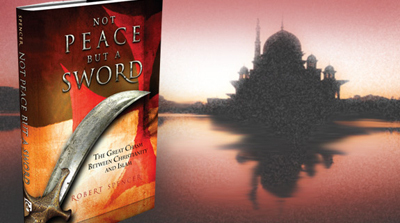
A review of Robert Spencer's Not Peace But a Sword: The Great Chasm Between Christianity and Islam.
Robert
Spencer has written a dozen books on Islam, as well as thousands of
pages of commentary on Islamic law, scripture, and tradition, but this
may be his most significant book yet because of its potential to alert
Christians to a dangerous gap in their knowledge of Islam. Christian
leaders are badly in need of a wake-up call about Islam and this is a
wake-up call that is hard to ignore. Not Peace but a Sword asks
questions about the relationship between Christianity and Islam that
few others are asking, even though they are questions that beg for
answers. The main question is whether the differences between
Christianity and Islam can be worked out or whether there is an
unbridgeable chasm between the two faiths. Spencer is not saying that
individual Muslims must necessarily be at odds with individual
Christians but he is asking whether Islam’s doctrinal hostility toward
Christianity can be overcome, or whether it is of the essence of Islam.
Continue reading, here.
Homiletic & Pastoral Review
Fifty Years Later–Vatican II’s Unfinished Business
By Fr. Regis Scanlon, O.F.M. Cap.
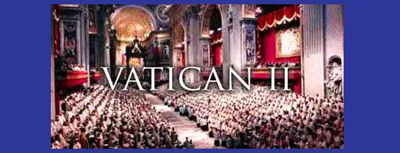
Today, 50 years after the opening
of Vatican II, the misinterpretation of one of its most salient
documents, Lumen Gentium, continues to drive a number of Catholics in
the United States into one of two camps, the “right” or the “left.”
For
most American Catholics over 50, it is an accepted fact that dissent
from the magisterium of the Church is widespread, tolerated, and, in
some quarters, even welcomed. The breaking point, of course, was Paul
VI’s 1968 prophetic encyclical, Humanae Vitae, which condemned
contraception as “intrinsically disordered.” The encyclical became one
of the most controversial documents of the century, if not many
centuries. The widespread dissent by Catholics was led with enthusiasm
by huge numbers of Catholic theologians, professors and intellectuals.
The onslaught of bright, articulate academics turning on the Pope
encouraged many Catholics in the pews to do the same. Why would so many
educated Catholics—who should have been ready and able to defend the
teaching authority of the Church—turn against the Pope with such force?
How could they justify it? Continue reading, here.
Christians and Muslims, Living Together

Christians and Muslims, Living Together | Preface to English Edition of 111 Questions on Islam (Ignatius Press, 2008) | Samir Khali
Samir, S.J. on Islam and the West | Interviews conducted by Giorgio Paolucci and Camille Eid
It Is a Fact That Muslims Are Now Part of Western Society
Due to large-scale immigration to Europe and the Western nations from Muslim
countries since World War II, Islam is no longer a distant, exotic religion. In
fact, Muslims are present throughout Europe and in many parts of the United
States. Demographers project that the number of American and European Muslims
will increase in the immediate future.

At present, Europeans are dealing with the challenge of protecting their values
while seeking a solution to the social ills of alienation, segregation,
poverty, and terrorism associated with the Muslim immigrants. Europeans express
concerns about the rapid development of Eurabia.
Since the terrorist attacks on the World Trade Center "Twin Towers"
in New York City on September 11, 2001, Islamophobia has spread through the Western
nations. The following pages were prepared to help readers understand three
things:
1. how Muslims and Christians can coexist peacefully;
2. what are the causes for the deep unrest that pervades the entire Muslim
world;
3. and what are the means to promote greater dialogue and understanding between
Muslims and Christians that will lead to a joint social, universal, and
political effort for the benefit of all people.
In order to remain sensitive to and balanced in discussing the past and present
situation, a question-and-answer format is used. The author responds to a
series of questions posed by two journalists, one Italian and the other
Lebanese. The intent of this balanced approach is to offer readers a clear
portrait of Islam.
Muslims and Christians: How to Live Together
Islam shares some common elements with
Christianity but also has many differences. The Muslim culture is quite
different from that which emerged in the Western world as a result of the
influence of Christianity. Because of massive demographic movement, both groups
are now obliged to live together in contemporary society.
The Muslim world today faces one of the most profound identity crises in its
entire existence. Comprising nearly 1.5 billion people living on all
continents, it is struggling to find a common position for all Muslims. The
search for identity has become particularly acute since the abolition of the
khalifate (the office of Muhammed's successor, as head of Islam) on March 3,
1924, by Kemal Atatürk. The khalifate was the last representative symbol of
unity of all Muslims. Therefore, contemporary Islam has no single recognized
authority that would accomplish Muslim unity.
What are the foundations of Islamic faith? Why does Islam seem to be growing so
fast today? What is the true meaning of the word jihãd, in the Qur'ãn and Islamic tradition, and in modern
Arabic? Is it correct to say that men are superior to women in Islam, or is it
just a cliché? Does religious freedom exist in Islam?
Furthermore, how does the Qur'ãn present the life of Jesus? What is the
Qur'ãn's view of Mary? And of Christians and Jews? And of other religions? Is
Islam a religion of peace, or one of violence? Can we reconcile Islam with
democracy and modernity? Can we reinterpret the Qur'ãn for our era? Does Islam
distinguish between politics and religion?
Modernity Is Difficult to Accept
After having passed through centuries of
stagnation, the Muslim world is experiencing great difficulty in facing
modernity. The Christian world has had the leisure of several centuries since
the Renaissance and the Enlightenment, since the French and American
revolutions, and since industrialization to assimilate modernity slowly.
Modernity is a concept that is foreign to many Muslims. This is exacerbated due
to the fact that most Muslim countries suffer from widespread illiteracy and
are governed by authoritarian political regimes or dictatorships. The concept
of "human rights" is foreign to a large segment of the population.
There is an additional psychological barrier to accepting modernity. Many
Muslim countries have experienced diverse forms of European colonization over
the past two centuries. As a result, their attitude toward the West,
modernity's birthplace, is ambiguous. This is a mixed attitude, one of
simultaneous attraction and rejection. Moreover, because the West has become
increasingly secularized in modern times, that is, rejecting many ethical
principles and values that were common to both peoples, modernity appears to
Muslims as a breeding ground for atheism and immorality.
Finally, the memory of the glorious period of the Middle Ages, especially
between the ninth and twelfth centuries, when intellectual and scientific
activities in the Muslim world had peaked and actually exceeded the achievements
of the West, makes the current scientific and intellectual decline even more
difficult to accept.
The Seeds of the Malaise
This current state of malaise results from the very sources of the Muslim
faith: the Qur'ãn, the sunna
(Islamic traditions connected to Muhammad), and tradition.
Many Westerners fear Islam as a "religion of violence". Muslims often
call simultaneously for tolerance and understanding as well as for violence and
aggression. In fact, both options are present in the Qur'ãn and the sunna. These are two legitimate manners--two distinct ways
to interpret, to understand, and to live Islam. It is up to the individual
Muslim to decide what he wants Islam to be.
It is necessary that we return to the very sources of the Muslim faith (the Qur'ãn
and the sunna) and proceed
rapidly through history until we arrive at this very day. This book, therefore,
aims at presenting the Islamic faith in an objective manner, at providing a
sure knowledge of this faith, and at helping people to engage in a profound
reflection from a double point of view: that of history and that of modernity.
To Live and Build the Future Together
This volume intends to promote
understanding and encounters between Muslims and Christians. It aims to provide
the groundwork for dialogue, in the true meaning of the word, not as a search
for some compromise between these two worlds but in a sincere and unswerving
commitment to truth, with openness to the other side. Ambiguous speech serves
neither Muslims nor Christians but creates only more confusion. The commentary
shows that both of these cultural and religious traditions have many things in
common, as well as many differences. Accepting the differences of another group
does not mean surrendering one's human, spiritual, or religious convictions.
Muslims and Christians can surely live together if they want to do so. Neither
group has to give up its identity, dogma, or faith, because at that level no
compromise is possible. As the Muslims' prophet says in the Qur'ãn: "You
have your religion and I have mine!" (Q 109:6).
Building a society together is certainly possible but also demanding, and that
is precisely why it is worthwhile and rewarding!
Living together in a preexistent sociopolitical system means to accept the
given system as it is but to remain open to improvement. This is the only way
to grow together in wisdom and humanity and to build a future world open to
everyone.
SAMIR RHALIL SAMIR, S.J.
and WAFIK NASRY S.J.
Related IgnatiusInsight.com Links/Articles:
• 9/11 Revisited | Fr. James V. Schall, S.J.
• The Regensburg Lecture: Thinking Rightly About God and Man | Fr. James V. Schall, S.J.
• Is Dialogue with Islam Possible? Some Reflections on Pope Benedict XVI's
Address at the University of Regensburg | Fr. Joseph Fessio, S.J.
• Benedict Takes the Next Step with Islam | Mark Brumley
• Spartans, Traitors, and Terrorists | Dr.
Jose Yulo
• Martyrs and Suicide Bombers | Fr. James V. Schall, S.J.
• On the Term "Islamo-Fascism" | Fr. James V. Schall, S.J.
• Plato's Ring in the Sudan: How Freedom Begets Isolation of the Soul | Dr.
Jose Yulo
• The Echo of Melos: How Ancient Honor Unmasks Islamic Terror | Dr.
Jose Yulo

111 Questions On Islam: Samir Khalil Samir S.J. on Islam and the West
Samir Khalil Samir, S.J. | Interviews conducted by Giorgio Paolucci and Camille Eid
The terrorist attack on the Twin Towers, the Afghan conflict, waves of
migration, and the presence of twelve million Muslims in the European
Union: these are just a few of the things
that have helped contribute to a growing interest in Islam, its culture,
and its followers. They awaken old and new questions about a religious,
cultural, and political reality that
1,200,000,000 people consider themselves a part of.
This book is the result of a series of extended interviews between an
internationally acclaimed expert on Islam and two journalists who have
dedicated themselves for many years to
studying key themes of Islam and analyzing the possibility of
coexistence between people of different faiths and cultures.
How was Islam born? What does the Qur'an represent for Muslims? What
relationships have developed between Islam and violence, between Islamic
culture and the West? How can
a real integration of Islam take place in European societies? What are
the conditions for a constructive encounter between Christians and
Muslims?
Samir Khalil Samir--one of the world's leading experts on
Islam--responds to these questions in an in-depth interview that can
help one learn and judge for oneself, without
prejudice or naivete. This is a contribution in the spirit of the
realism needed in order to build adequate ways of living with those who
have become our new neighbors.
The Menace of the Herd

by Thomas M. Doran | Catholic World Report
“Alice
came to a fork in the road. 'Which road do I take?' she asked.
‘Where
do you want to go?' responded the Cheshire Cat.
'I
don't know,' Alice answered.
'Then,'
said the Cat, 'it doesn't matter’.”
—
Lewis Carroll, Alice in Wonderland
A long time ago,
my dad told all of us in the car to beware of the menace of the herd. My dad
happened to be a blue-collar philosopher, if not a prophet, though I didn’t
realize it at the time.
The common
wisdom, what the smart set is apt to tell us, is that religious believers don’t
think, don’t question, don’t challenge. Believers are the herd in the worst
sense, a herd of stupid, blind sheep. But how often is rigorous reason applied
to this assertion, an assertion that is now conventional wisdom, an assertion
that troubles and intimidates many believers?
A black hole is
defined by physicists as a region of space-time from which gravity prevents
anything, including light, from escaping, a speck of space containing
unimaginable mass. The smart set and their disciples are certain (one might
say, they have faith) that black holes exist, but try to find a smart setter
who understands and can delineate the quantum physics that underlies this
concept.
Evolution is
defined as the change in the inherited characteristics of biological
populations over successive generations. The smart set and their disciples are
certain (one might say, they have faith) that evolution is occurring, but try
to find a smart setter who understands the genetics and biochemistry that
underlie evolutionary processes.
And then there’s
string theory. Particles that are waves and waves that are particles.
Dimensions exceeding those we can measure. Fundamental particles. The smart set
accepts all of it because science proclaims it, but is clueless as to the
theoretical physics and mathematics that predict these phenomena.
That’s not to
say that black holes, as understood by modern science, don’t exist, or that an
evolutionary process isn’t contributing to change in species, or that string
theory is a wayward explanation of reality, but only to point out that many put
faith in scientific
concepts they cannot themselves comprehend. In this sense, they are no
different than the “herd of religious believers” they so often ridicule.
April 23, 2013
New: "Bakhita: From Slave to Saint"
Now available from Ignatius Press Bakhita: From Slave to Saint
Bakhita: From Slave to Saint
By Roberto Italo Zanini
When she was about nine years old, Josephine Bakhita was kidnapped near Darfur, Sudan, by Arab slave traders. For several years she was subjected to brutal and humiliating treatment until she was ransomed and taken to Venice, Italy, where she became a Catholic and a nun.
Joyfully and serenely Bakhita served in a convent, school and infirmary run by Canossian sisters in a small, obscure town in northern Italy until her death in 1947. Then something even more remarkable than her redemption happened.
Hundreds of ordinary people came to see Bakhita lying in state, and along with these visits came stories about how the simple nun had given comfort, advice and encouragement as she went about her tasks as cook, doorkeeper, nurse, etc. Almost immediately graces and miracles attributed to Bakhita's intercession began to be reported.
Ever since, the place where Bakhita died and the wonders began has been a shrine visited by people from all over the world. They come to seek the intercession of one who was no stranger to loss and suffering and yet had given herself with complete confidence to the Lord. It is here, in this sparsely furnished room, where Italian journalist Roberto Italo Zanini begins his story of Bakhita and her journey from slavery to sainthood.
Based on Bakhita's autobiography, which she dictated to a Canossian sister in obedience to her superior, the canonization files and many other sources, Zanini records the life, virtues and miracles of this daughter of Africa who has become a sister to the whole world.
Roberto Italo Zanini is an editor and writer for Avvenire, the daily newspaper of the Italian bishops. His articles have appeared in many Italian publications, both Catholic and nonreligious.
Fifty Years Later–Vatican II’s Unfinished Business
Fifty Years Later–Vatican II’s Unfinished Business | Fr. Regis Scanlon, O.F.M. Cap. | Homiletic & Pastoral Review
Today, 50 years after the opening of Vatican II, the misinterpretation of one of its most salient documents, Lumen Gentium, continues to drive a number of Catholics in the United States into one of two camps, the “right” or the “left.”
Fifty years after the opening of the Second Vatican Council, the Church in the United States is in the throes of a struggle. Loyal Catholics are showing renewed vigor and vitality, and are helping the Church to move forward in unity. At the same time, the Church is also being exhausted and drained from within by a vocal movement of other Catholics who continue to dissent from Church teachings, particularly the teachings of the Second Vatican Council.
Dissent is entrenched in the Church in the U.S.
For most American Catholics over 50, it is an accepted fact that dissent from the magisterium of the Church is widespread, tolerated, and, in some quarters, even welcomed. The breaking point, of course, was Paul VI’s 1968 prophetic encyclical, Humanae Vitae, which condemned contraception as “intrinsically disordered.” The encyclical became one of the most controversial documents of the century, if not many centuries. The widespread dissent by Catholics was led with enthusiasm by huge numbers of Catholic theologians, professors and intellectuals. The onslaught of bright, articulate academics turning on the Pope encouraged many Catholics in the pews to do the same.
Why would so many educated Catholics—who should have been ready and able to defend the teaching authority of the Church—turn against the Pope with such force? How could they justify it?
The most popular argument was that permission to dissent had been given by none other than the Second Vatican Council. The dissenters claimed that “the spirit of Vatican II,” along with theological perspectives of the Council, supported their argument that individual Catholics have a right to dissent from “non-infallible” Church teachings—even authoritative encyclicals like Paul VI’s “Humanae Vitae”—if they felt they had a good enough reason.
Unfortunately, this false notion was unwittingly given a boost by none other than the bishops of the United States. On November 15, 1968, a few months after the promulgation of Humanae Vitae, the bishops issued their pastoral letter, “Human Life in Our Day,” to help Catholics interpret the Pope’s encyclical. The bishops said in no. 51 of that document that in some cases, a Catholic could dissent from “non-infallible authentic doctrine” of the magisterium. They explained: “The expression of theological dissent from the magisterium is in order only if the reasons are serious and well-founded, if the manner of the dissent does not question or impugn the teaching authority of the Church, and is such as not to give scandal.”
April 22, 2013
Christianity and Islam: Cooperation or Conflict?

Christianity and Islam: Cooperation or Conflict? | William Kilpatrick | Catholic World Report
A review of Robert Spencer's Not Peace But a Sword: The Great Chasm Between Christianity and Islam.
Robert Spencer has written a dozen books on Islam, as well
as thousands of pages of commentary on Islamic law, scripture, and tradition,
but this may be his most significant book yet because of its potential to alert
Christians to a dangerous gap in their knowledge of Islam. Christian leaders
are badly in need of a wake-up call about Islam and this is a wake-up call that
is hard to ignore. Not Peace but a
Sword asks questions about the
relationship between Christianity and Islam that few others are asking, even
though they are questions that beg for answers.
Coexistence or Chasm?
The main question is whether the differences between
Christianity and Islam can be worked out or whether there is an unbridgeable
chasm between the two faiths.
Spencer is not saying that individual Muslims must necessarily be at
odds with individual Christians but he is asking whether Islam’s doctrinal
hostility toward Christianity can be overcome, or whether it is of the essence
of Islam.
This hostility toward non-Muslims is abundantly evident in
almost every country where Muslims are in the majority and even in many places
where they are a sizeable minority.
A few weeks ago in Pakistan, a Muslim mob attacked a Christian
neighborhood burning down 180 homes and damaging two churches. In Egypt, Christian girls are routinely
kidnapped and forced to marry Muslim men.
In Nigeria, Christians are burned alive in their churches. Brutal attacks on Christians are a
daily occurrence in the Muslim world, and in many instances, the hostility is
fueled by Muslim clerics.
The hostility is much less in evidence in the world of
Western academics and in the conference rooms where Muslims and Christians
gather for dialogue. In these
settings, Christian professors and prelates get along fine with their
well-educated and friendly Muslim colleagues and dialogue partners, all of whom
seem committed to the proposition that the values Christians and Muslims share
in common are much more important than the differences that separate them. Many
Christians in the West take it for granted that Muslims share the same values
they do, but, as Spencer ably demonstrates, this assumption seems to be based
largely on wishful thinking rather than on knowledge of Islamic doctrine and
practice.
Spencer is not opposed to dialogue per se, but he suggests
that Christians need to be more clear-eyed about it.
Continue reading on the CWR site.
Related articles
 New: "The Price To Pay: A Muslim Risks All to Follow Christ"
New: "The Price To Pay: A Muslim Risks All to Follow Christ" Islam's Rise and the West's Denial
Islam's Rise and the West's Denial "Islam is built on a rejection of the main tenets of Christianity."
"Islam is built on a rejection of the main tenets of Christianity." New: "Christianity, Islam and Atheism: The Struggle for the Soul of the West"
New: "Christianity, Islam and Atheism: The Struggle for the Soul of the West"
April 20, 2013
Apocalypse How?

A Scriptural Reflection on the Readings for Sunday, April 21st, the Fourth Sunday of Easter | Carl E. Olson
Readings:
• Acts 13:14, 43-52
• Ps 100:1-2, 3, 5
• Rev 7:9, 14b-17
• Jn 10:27-30
Pop quiz: which book of the Bible describes black
helicopters, high-tech warfare involving Russia and China, and computer chips
embedded in human flesh?
Hopefully you answered, “None.” But you may know that some
Christians believe the Book of Revelation, or The Apocalypse, describes
soon-to-transpire, end of the world events in harrowing detail. And most
people—even many Catholics—believe that the final book of the Bible is an
unremitting work of doom, gloom, and bloodshed.
John the Revelator’s book undoubtedly contains images of
doom and gloom, but not for those who stand for and with Christ. And while
there is plenty of bloodshed in the Book of Revelation, the good news is that
the blood of the Lamb, shed for the sins of the world, cleanses those who
faithfully follow the Shepherd.
In other words, today’s reading from The Apocalypse is filled with joy. It
proclaims that God will not only overcome evil, He will—at the end of time as
we know it—bring together all of those who love Him. The great multitude
witnessed by John consists of those who have been saved through suffering, just as Savior, the slain Lamb (Rev. 5:6),
brought salvation through suffering and death. “The Church will enter the glory
of the kingdom,” explains the Catechism, “only through this final Passover, when she will follow her Lord in
his death and Resurrection” (CCC 677).
Those in the great multitude, from every nation, race,
people, and tongue, are the Church. They make up the New Israel, which has gone
through a New Exodus. While the first Exodus involved the people of Israel
being saved from the tyranny of Egyptian slavery, this final Exodus consists of
the people of the new covenant being saved eternally from the domination of sin
and death. As Jesus states, in the reading from today’s Gospel, “I give them
eternal life, and they shall never perish” (Jn. 10:28). The salvation of a
multitude too large to be counted is a fulfillment of the great covenant made
with Abraham: “I will make of you a great nation … All the communities of the
earth shall find blessing in you” (Gen. 12:2, 3; cf. Gal. 3:7, 29).
Overcoming death and establishing eternal life is a
constant theme in The Apocalypse. This can be seen in the imagery throughout
the book, which is bursting with allusions to the Old Testament, especially the
Pentateuch and the Prophets. The idea of being made “white” through
perseverance in faith is drawn from Daniel, a book used often by John: “Many
shall purify themselves, and makes themselves white, and be refined” (Dan.
12:10). White robes symbolize holiness and endurance. Priests in the time of
Christ were examined for purity; if they passed, they were dressed in white
robes, as was the High Priest. In the new covenant, those who have been
baptized into Christ, the High Priest,
and who endure to the end will be saved through the sacrifice of the Lamb on
the Cross.
The palm branches allude to the feast of
Tabernacles (cf., Lev. 24:39-40), which celebrated the harvest of crops and
commemorated God’s divine protection during the Exodus. Palm branches were also
used as symbols of victory (1 Macc. 13:51; 2 Macc. 10:7). In The Apocalypse
they stand for God’s victory over evil, His protection of the Church throughout
the time of tribulation, and the restoration of right relationship with God, as
evidenced by the songs of praise before the heavenly throne.
John’s vision is also filled with a liturgical and
sacramental perspective. The great multitude worship God in His temple, which
ultimately is the Person of Christ (cf., Jn 2:19-22). Being washed and made
white suggests the bath of Baptism, and the lack of hunger or thirst is
Eucharistic in its promise of complete joy in the presence of the Lamb.
Thus, in the end—The End!—the apocalyptic truths of
the Book of Revelation don’t involve helicopters and top secret technology, but
the salvation of God’s flock, His people, through the death and Resurrection of
the Lamb.
(This "Opening the Word" column originally appeared in the March 30, 2007, issue of Our Sunday Visitor newspaper.)
April 19, 2013
The Greatest Love Story Ever Told?
Here is the Prologue to Joseph Pearce's new book,  Shakespeare on Love: Seeing the Catholic Presence in Romeo and Juliet (Ignatius Press, 2013):
Shakespeare on Love: Seeing the Catholic Presence in Romeo and Juliet (Ignatius Press, 2013):
The Greatest Love Story Ever Told?
In the history of the world, and in the canon of world literature, there have been many great love affairs and many legendary lovers. We think perhaps of Helen and Paris, Odysseus and Penelope, Aeneas and Dido, Antony and Cleopatra, Dante and Beatrice, Paolo and Francesca, Petrarch and Laura. And, of course, whenever we think of the world’s greatest lovers we can scarcely avoid thinking of Romeo and Juliet. Yet when we step back from the list we notice something a little odd about the lovers and their love affairs. We are struck by how different one love affair is from another. On the one hand we have the adulterous passion of Helen and Paris, with its destructive consequences; on the other, we have the loyalty and chastity of the devoted wife Penelope, who serves as a beacon of light on her husband’s dark journey home. We have the disastrous love affairs of Aeneas and Dido, and Antony and Cleopatra, in which the lovers are so obsessed with each other that they forget and neglect their duties to their family, friends, and country. We have the adulterous love of Paolo and Francesca that leads to the murder of Francesca’s husband and the hurtling of the lovers into the hell of their infernal passion. At the other end of the lovers’ spectrum we have Petrarch’s idealized love for the unattainable Laura, and Dante’s idealized love for Beatrice, the latter of which, stripped of all selfishness, baptizes Dante’s imagination, enabling him to ascend to the mystic heights of beatitude. Thus we see that the right sort of love can lead us to heaven, whereas the wrong sort can condemn us to hell. If this is so, what sort of love do Romeo and Juliet have for each other? Is their love the right sort or the wrong sort? Is it heavenly or hellish? Is it fruitful or destructive?
Romeo and Juliet is perhaps the most famous love story ever written. Its cultural influence is so profound that Shakespeare’s “star cross’d” lovers have become synonymous with the very meaning of romantic love. But what exactly does the world’s greatest playwright have to say about the world’s greatest lovers? Does he sympathize with their plight? Does he consider them blameless, or are they at least partly responsible for the tragedy that awaits them? Is the love story about fatalistic forces beyond the control of the protagonists, or is it a cautionary tale warning of the dangers of unbridled erotic passion? And what does Shakespeare have to say about the relationship between romantic love, or eros, and the greatest love of all, the love which God has for man, which manifests itself in his giving his only Son as a willing sacrifice for man’s salvation? What relationship is there between eros and caritas, between the romantic love between a man and a woman and the love of Christ for humanity? What is the connection between the most famous love story ever written and the Greatest Love that there is? These questions are asked and answered in the following pages as we endeavor to see Romeo and Juliet through Shakespeare’s devoutly Catholic eyes.
More about the book:
Having given the evidence for William Shakespeare's Catholicism in two
previous books, literary biographer Joseph Pearce turns his attention in
this work to the Bard's most famous play, Romeo and Juliet.
"Star-crossed" Romeo and Juliet are Shakespeare's most famous lovers and
perhaps the most well-known lovers in literary history. Though the
young pair has been held up as a romantic ideal, the play is a tragedy,
ending in death. What then, asks Pearce, is Shakespeare saying about his
protagonists? Are they the hapless victims of fate, or are they partly
to blame for their deaths? Is their love the "real thing", or is it
self-indulgent passion? And what about the adults in their lives? Did
they give the young people the example and guidance that they needed?
The Catholic understanding of sexual desire, and its need to be ruled by reason, is on display in Romeo and Juliet,
argues Pearce. The play is not a paean to romance but a cautionary tale
about the naïveté and folly of youthful infatuation and the disastrous
consequences of poor parenting. The well-known characters and their
oft-quoted lines are rich in symbolic meaning that points us in the
direction of the age-old wisdom of the Church.
Although such a reading of Romeo and Juliet is countercultural
in an age that glorifies the heedless and headless heart of young love,
Pearce makes his case through a meticulous engagement with Shakespeare
and his age and with the text of the play itself.
Joseph Pearce is writer in residence and Visiting Fellow at Thomas More College in New Hampshire. He is the author of The Quest for Shakespeare and Through Shakespeare's Eyes and editor of the Ignatius Critical Editions of Romeo and Juliet, The Merchant of Venice, Julius Caesar, Hamlet, Macbeth and King Lear.
His other books include literary biographies of Oscar Wilde, J. R. R.
Tolkien, C. S. Lewis, G. K. Chesterton and Alexander Solzhenitsyn.
"Joseph Pearce's book on Romeo and Juliet stands like a lighthouse in
the murk of modern literary criticism. His approach challenges the
assumptions that govern popular 'scholarly' work on Shakespeare in our
time. It is massively researched, convincing, intelligent, and (happily)
interesting. I commend it highly to all possible readers."
- Thomas Howard, Author, Chance or the Dance?
Flashback to April 19, 2005
Seminarian Joseph Previtali was in St. Peter's Square when Pope
Benedict XVI was introduced on April 19, 2005. Here is what he saw and experienced:
Annuntio vobis gaudium magnum - habemus papam! Eminentissimum et
reverendissimum Dominum Josephum, Sanctae Romanae Ecclesiae Cardinalem
Ratzinger. Qui accipit nomen Benedictus XVI!
Indeed, it is a great joy to be Catholic today, as we receive yet
another blessing from Our Father in Heaven: Pope Benedict XVI. I just
got back from St. Peter's, and I want to share with you my beautiful
ecclesial experience.
I went down to St. Peter's Square at around 5:30 pm and joined my
brother NAC seminarians. A few of the guys had brought guitars and
drums, and we began to sing praise-and-worship songs. During our time
of prayer, many of the others in the Square came over and joined us. It
was an awesome experience to praise the Lord in song with so many
fellow Catholics, all of us imploring Him to send us another holy pope.
At around 6:00, as we were ending a song, the smoke emerged from the
Sistine Chapel chimney. At first, it was black and we were
disappointed. But then we realized that they must have reached a
consensus because of the early burning of the ballots. At about the
same time, the smoke turned white. Little by little the anticipation
increased as white smoke came pouring out. We began cheering, and
waited for the conclusive sign that we were truly seeing white smoke:
the ringing of the bells.
After about five minutes (at least it seemed that long), the crowd
erupted into a huge roar as the bells began to move. The explosion of
emotion was much like what one would experience during an exciting
moment at a sporting event. Needless to say, the anticipation
heightened.
We waited for 25 more minutes, singing praise to God for the new Pope
and talking about who it might be. Of course, everyone now says they
knew it was Cardinal Ratzinger all along. I, for one, have never been
happier to be wrong.
When the gentiluomini came out onto the center balcony of the facade
of St. Peter's Basilica to close the curtains, the crowd roared in
delightful anticipation. Onto the balcony emerged Cardinal Jorge Medina
Estevez, the Cardinal Proto-Deacon. He greeted his "dear brothers and
sisters" in five languages, and then declared the solemn announcement
of the new Bishop of Rome.
When he said "Dominum Josephum", we began to jump around like we were
sitting in the Kennel Club section at a Gonzaga basketball game. And
when the name "Ratzinger" was pronounced, there was pandemonium the
likes of which I have never seen.
We waited with now-relieved anticipation for the procession of the
new Pope Benedict XVI onto the balcony to greet the crowd. The Church
had gotten her man, and we were ready to give him what has now become a
Pope's welcome. And then he came.
For most of us, it was the first time we had seen anyone besides John
Paul II in the Pope's white zucchetto. There was the familiar German
face of Joseph Ratzinger, a humble servant of the Lord, as he rightly
called himself in his address. As he did many times as Prefect of the
Congregation for the Doctrine of the Faith, Pope Benedict got right to
the point: "After the great Pope John Paul II..." The crowd roared in
approval of this noble salutation for our dear departed JPII.
Benedict then assured us that he has entrusted himself to the Lord
and to His Mother and to the prayers of the Christian faithful. There
was a serene humility about him. I imagine that he will waste no time
in beginning his Petrine Ministry. His choice of St. Benedict's name no
doubt indicates something of the direction of his pontificate. The
choice of the name of the patron saint of Europe is certainly
appropriate during this time of the secularization and
de-Christianization of European society. Additionally, St. Benedict's
great promotion of and love for the dignified celebration of the Sacred
Liturgy will not go unheeded by our new Holy Father.
After his brief address, our new Pope intoned the Urbi et Orbi
Blessing. As we knelt before him and made the sign of the cross, many
were moved to tears. The joyous celebration of this gift from God to
His Church gives us the opportunity to reflect more deeply on the
richness of our Catholic faith. What an even more precious gift is that
faith!
Pope Benedict XVI is eating supper tonight with the cardinals in the
Domus Sanctae Marthae, where he will spend the night. He will celebrate
Mass with them tomorrow morning at 9:00 am in the Sistine Chapel. Let
us pray for him as he begins his time as the 264th Successor of Peter.
May the Blessed Virgin Mary and her faithful son Pope John Paul II,
intercede for him before the throne of God, that he may take up this
cross and follow the Lord in complete fidelity and with peace and joy.
Your brother in Christ,
Joe
Joe is now Fr. Joseph Previtali of the Archdiocese of San Francisco and is Parochial Vicar at St. Gabriel parish.
Carl E. Olson's Blog
- Carl E. Olson's profile
- 20 followers




